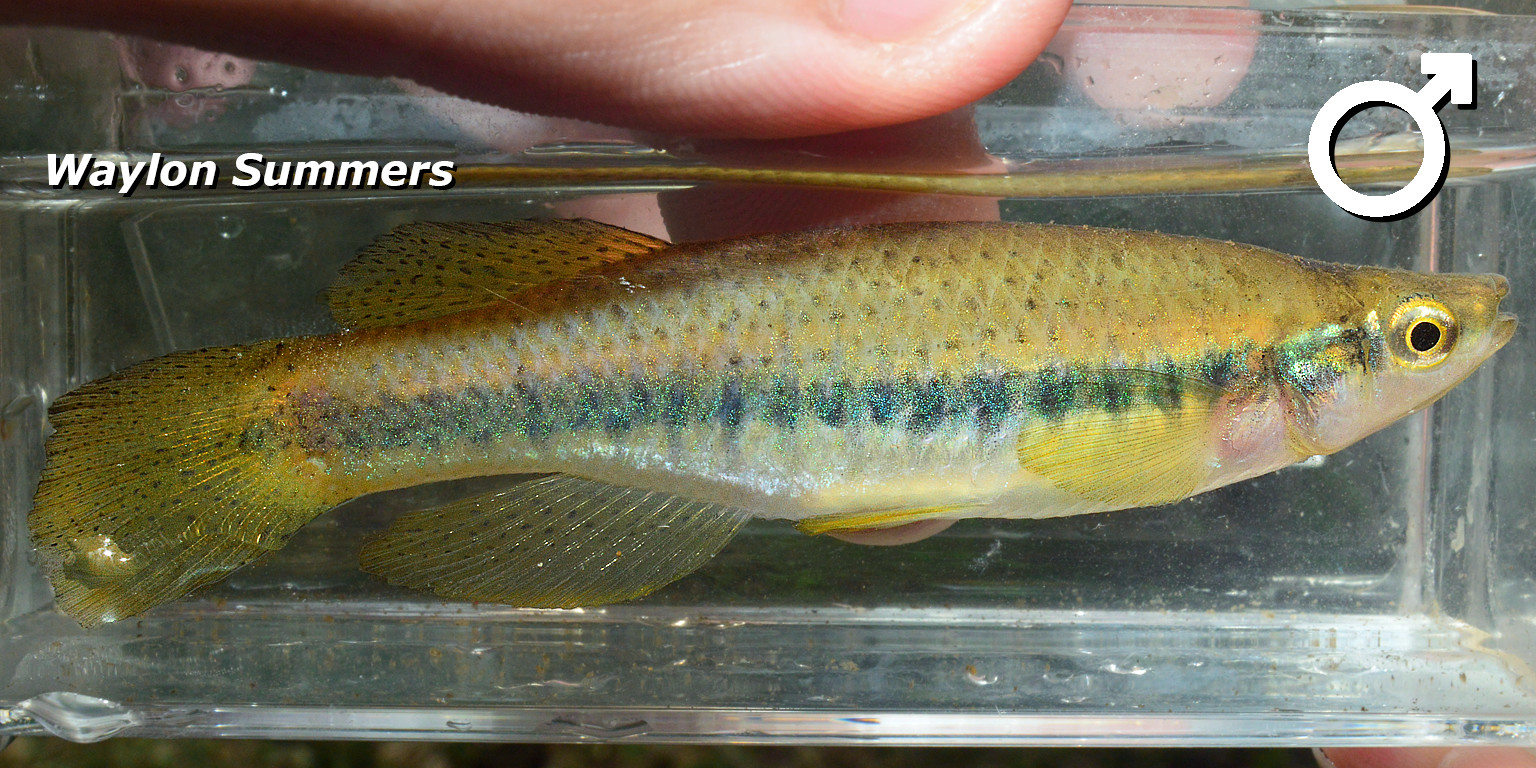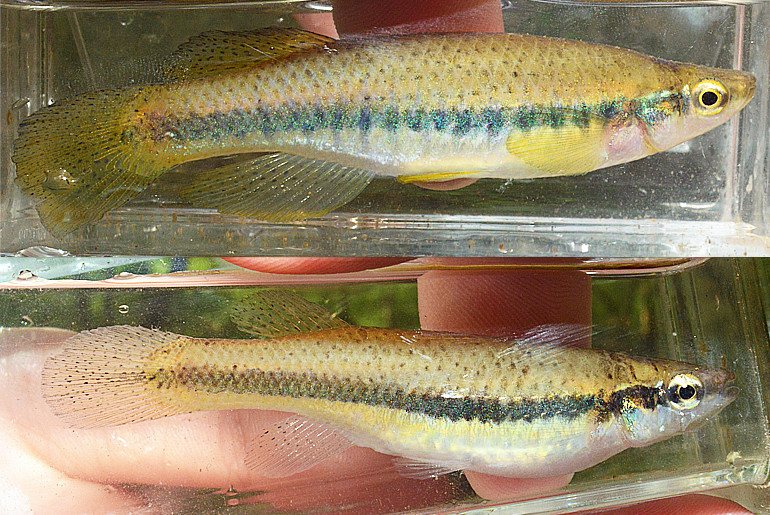A North-American Killifish and Its Current Complex
There are multiple species of fish in the genus Fundulus that are commonly called by fishermen as, “Topminnows”. They are correct that this species is often seen at the top of the water but it is technically not a “minnow”. They are actually a Killifish, which span across all the Americas, Africa and Asia! Topminnows have a flat head with a mouth that is parallel with the eye. This makes the mouth very close to the surface of the water which is perfect for eating small nymphs and bug across the surface of the water.


Determining Gender
Midsized fish are difficult to determine gender but larger fish can be distinguished by their coloration and body morphology. Fundulus olivaceus is a fish that demonstrates sexual dimorphism, which means we can know the gender of larger fish just by its physical appearance, no disection needed.
Males will have larger anal and adipose fins. These are the two fins found at the back of the fish, before the tail. Also look at the long stripe that goes across the fish. Most fish have a “lateral line” which is a line of sensitive hair cells the fish uses to feel movements and vibrations in the water. In this fish’s case, they actually do not have a lateral line, though they still have the black line that goes horizontally across the fish. This is known as a “lateral band”. If you see distinguished vertical bars across the band (compare above), it most likely be male.
Many fish in North-America get their breeding colorations only in the spring but male topminnows display a more yellow hue during the summer breeding season. This can be subtle though and up to personal interpretation. I will admit that while initially observing the male in the image, I did not see much of a difference in coloration. At first I just believed the specimen was nervous and lightly colored but after taking an image, I could easily see the yellow caudal, adipose and anal fin.
A Fish In Complex
There is much debate on the current species division of Fundulus olivaceus and the more commonly found, Fundulus notatus. These two fish share the same genus and sometimes can be found swimming amongst each other in the wild. One fish is found with thick spots (F. olivaceus) and the other is found without or with very few faint spots (F. notatus). That seems fairly simple to distinguish whenever, so why is there so much debate and division on these two fish? The reason is because of natural variation and the fact that there has recently been some interesting information published on their genetic spectrum which shows varying levels of hybridization.
An article posted by the Southeastern Fishes Council Committee (Vol.1 #59 Article 4 2019), showed that the two species can be seen together in the wild and through genetic testing they found there were half-and-half hybrids of the two. They also found that there were specimens with the nuclear alleles of F. notatus while still having mtDNA of F. olivaceus. Meaning there is a spectrum of hybridization and is not a distinguishable split in speciation though both are currently recognized as valid.

Catching Topminnows
Unlike many of the Cyprinoid minnows turning beautiful colors in the spring, Topminnows turn a more vibrant coloration during the summer and can be found easier in the summer given the low amount of rain. These fish dwell at the very top of the water, making them very easy to see. Topminnows can be found near small pockets of slow moving water whenever the water is high and moving fast. The spring months are usually the most inopportune time to search for these fish given the water is usually moving quickly from repetitive rain and that their coloration is more drab during this time. I have caught them on #30 micro hooks, dipnet, and casting net.


